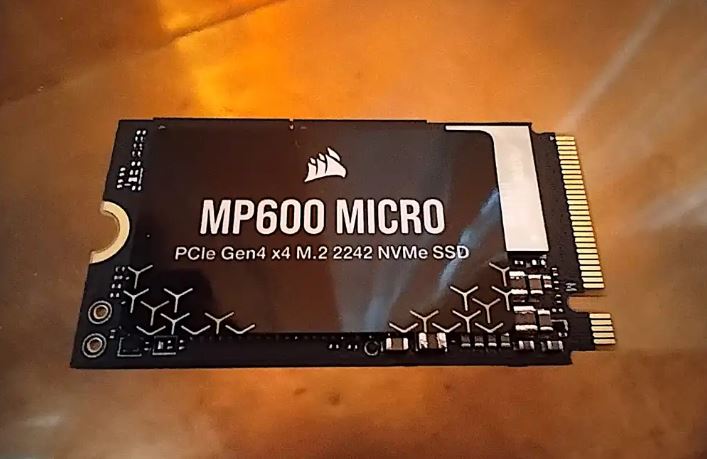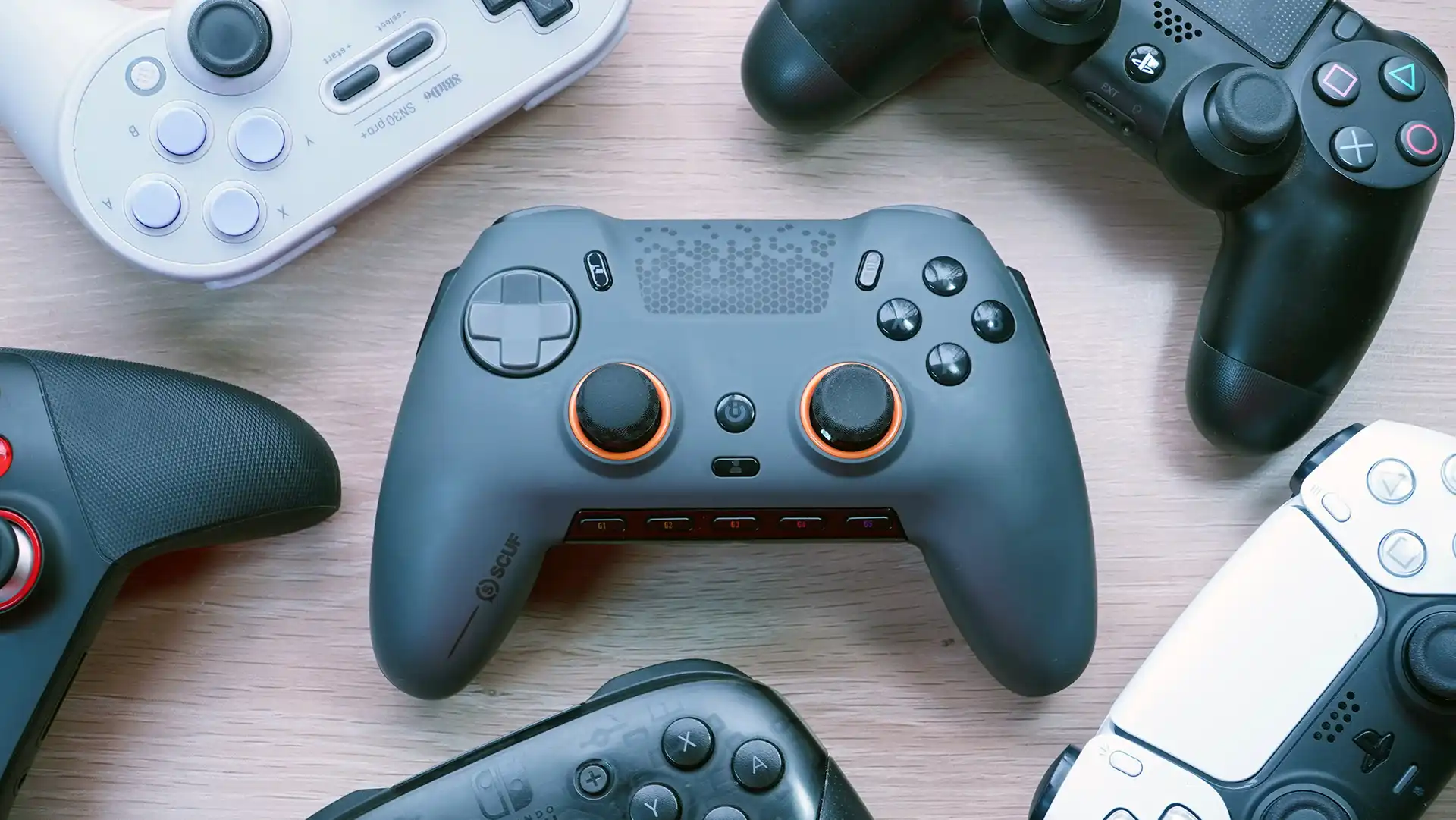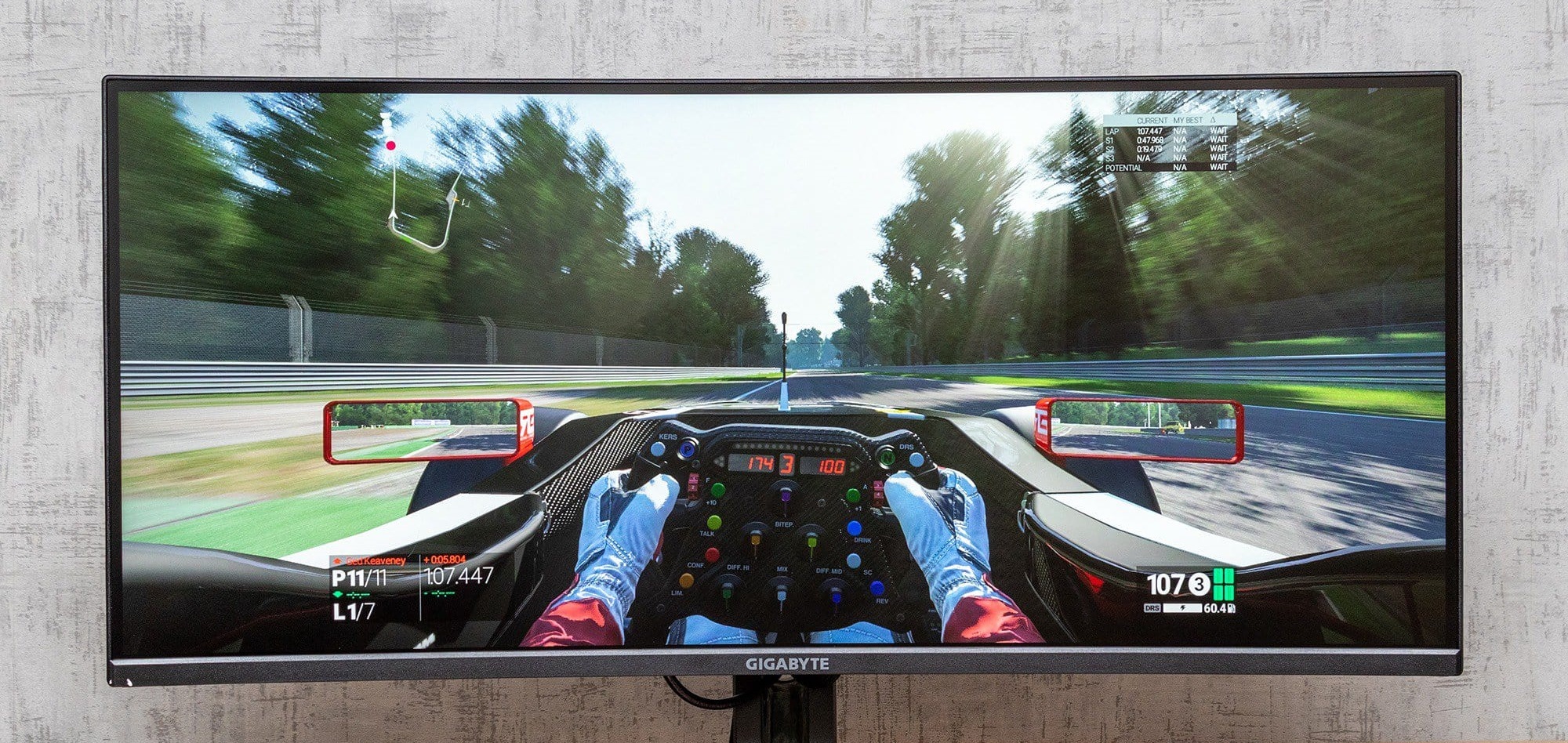Made as a direct fit for Lenovo’s new 2242 M.2 slots, the MP600 is the fastest such SSD we’ve tested to date.
Best Prices Today: Corsair MP600 Micro 2242 SSD
It appears that Lenovo really set off a form-factor trend with the 2242 (22mm wide, 42mm long) M.2 slots on many of its latest products. The MP600 Micro NVMe SSD is Corsair’s first foray into 2242-land.
What’s the practical advantage of an SSD that’s 42mm long compared to the 30mm length of a 2230 module? (Besides 12mm, of course — sorry, had to be a weisenheimer.) The truth is, while a 2242 part offers a little more room to spread out the components, there’s not enough room for another NAND chip to increase capacity. The form factor basically just solves a fitment issue without resorting to an adapter for a 2230 SSD.
You may have noticed that Corsair calls its 2230 MP600 “Mini” and the 2242, which is larger, “Micro.” We suppose they didn’t want to rename an existing product even though “micro” is generally thought of as smaller than “mini.” Truthfully, it was a minor struggle to keep the names straight throughout the review.
What are the Corsair MP600 Micro’s features?
Not to belabor the point, but the MP600 Micro is 2242 form-factor PCIe 4.0 x4, NVMe SSD. It’s a DRAM-less, host memory buffer (HMB) design using a Phison PS5012-E21 controller and multi-layer TLC NAND.
How much is the Corsair MP600 Micro?
As far as we can tell, the MP600 Micro is only available in a 1TB capacity for $100. The previously reviewed MP600 Core Mini is only for sale in a 2TB version for $173 at the time of this writing. Both are competitive prices.

The MP600 Micro solves a fitment issue without resorting to an adapter for a 2230 SSD.
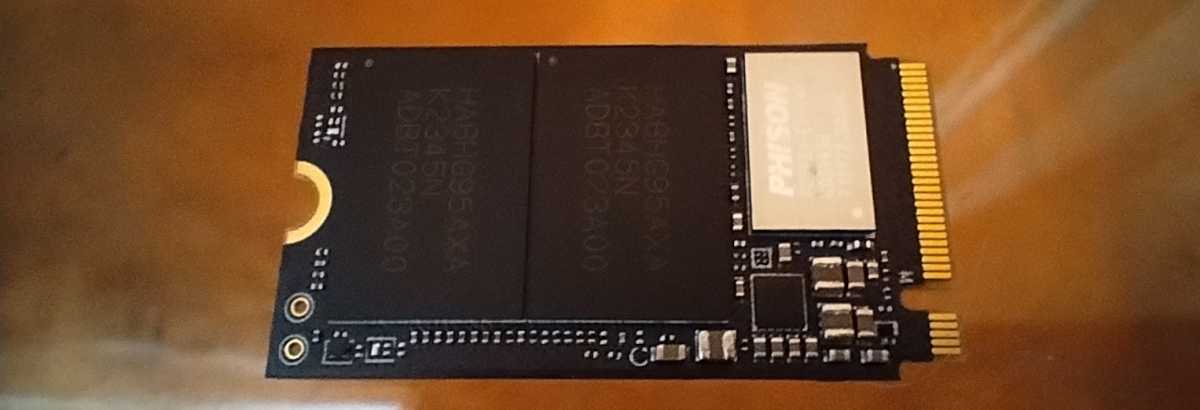
If you want a broader selection of capacities you can shop the Sabrent Rocket 2230 or Sabrent Rocket 2242 , as well as the WD Black SN770M — three small profile competitors shown in the performance charts below.
How fast is the Corsair MP600 Micro?
Somewhat surprisingly, the MP600 Micro outperformed the MP600 Mini under CrystalDiskMark 8. I had figured it was the same drive in a different form factor, but it’s much improved in this regard. The exception being the 450GB write where the Mini’s 2TB allowed a longer period of caching than the 1TB Micro.
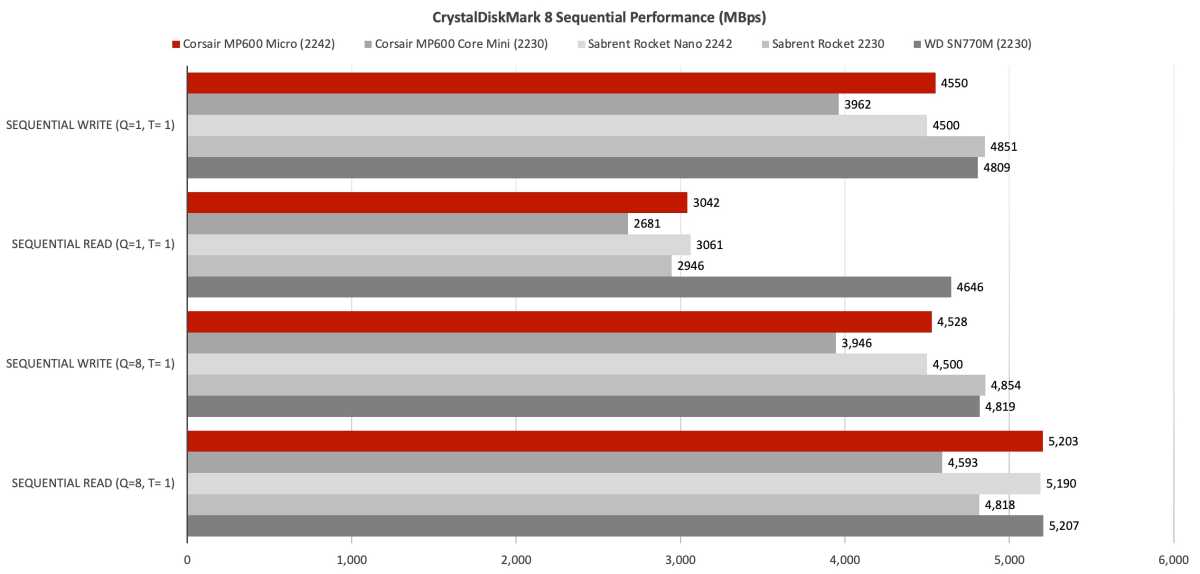
On the other hand, there was little difference in the random performance under CrystalDiskMark 8, though the MP600 Micro again edged out its older MP600 Mini sibling.
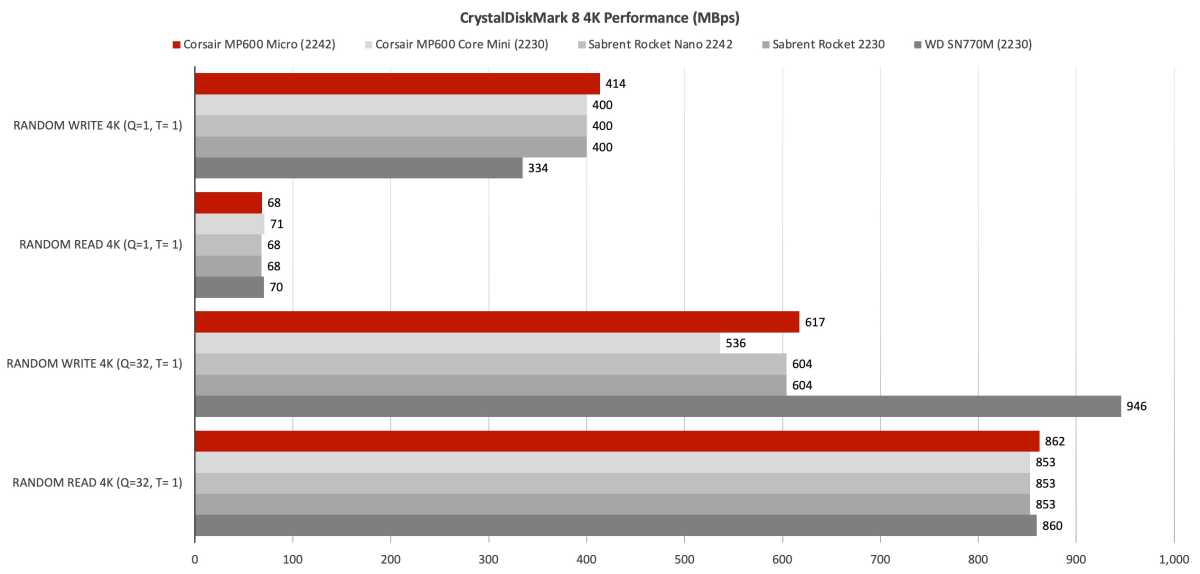
There was little to choose from between the five contenders in the 48GB transfers. The MP600 Micro’s time is decent in the overall scheme, but still not up with the top PCIe 4.0 drives.
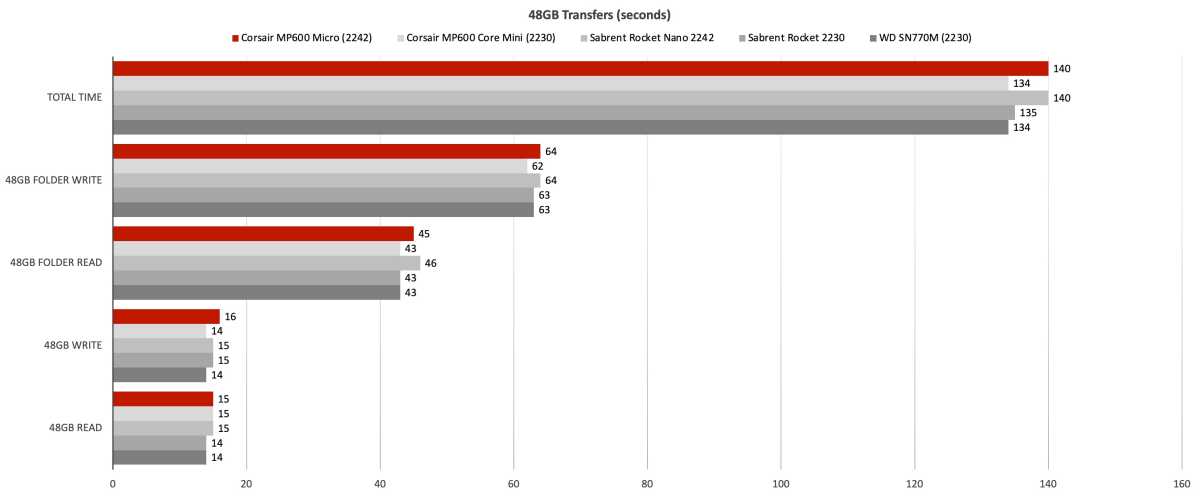
The MP600 Micro proved significantly slower in the 450GB write than its Mini cousin. This was largely due to the difference in capacity with the Micro being only 1TB and the Mini having 2TB of NAND.
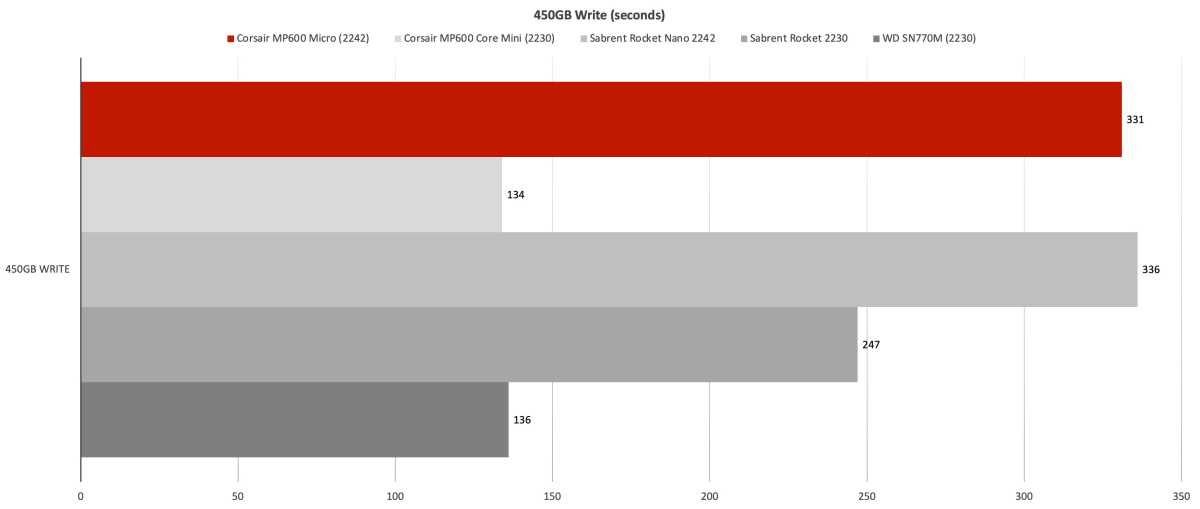
Shorter bars are better.
The MP 600 Micro dropped to its native write rate (no caching involved) rather quickly. However, it’s a pretty rapid native write rate at almost 1.3GB per second.

While not the speediest real-world small NVMe SSD we’ve tested, the MP600 Micro is still very fast.
Should you buy the Corsair MP600 Micro?
Given the right price and the need for a 1TB, 2242 form-factor NVMe SSD, the MP600 Micro is absolutely worth buying. The SSD passed performance muster with flying colors. But if you want 2TB, you’ll need to visit the competition.
How we test
Storage tests currently utilize Windows 11, 64-bit running on an X790 (PCIe 4.0/5.0) motherboard/i5-12400 CPU combo with two Kingston Fury 32GB DDR5 4800MHz modules (64GB of memory total). Both 20Gbps USB and Thunderbolt 4 are integrated to the back panel and Intel CPU/GPU graphics are used. The 48GB transfer tests utilize an ImDisk RAM disk taking up 58GB of the 64GB of total memory. The 450GB file is transferred from a 2TB Samsung 990 Pro which also runs the OS.
Each test is performed on a newly NTFS-formatted and TRIM’d drive so the results are optimal. Note that in normal use, as a drive fills up, performance may decrease due to less NAND for secondary caching, as well as other factors. This is less of a factor with the current crop of SSDs with their far faster NAND.
Caveat: The performance numbers shown apply only to the drive we were shipped and to the capacity tested. SSD performance can and will vary by capacity due to more or fewer chips to shotgun reads/writes across and the amount of NAND available for secondary caching. Vendors also occasionally swap components. If you ever notice a large discrepancy between the performance you experience and that which we report, by all means, let us know.

